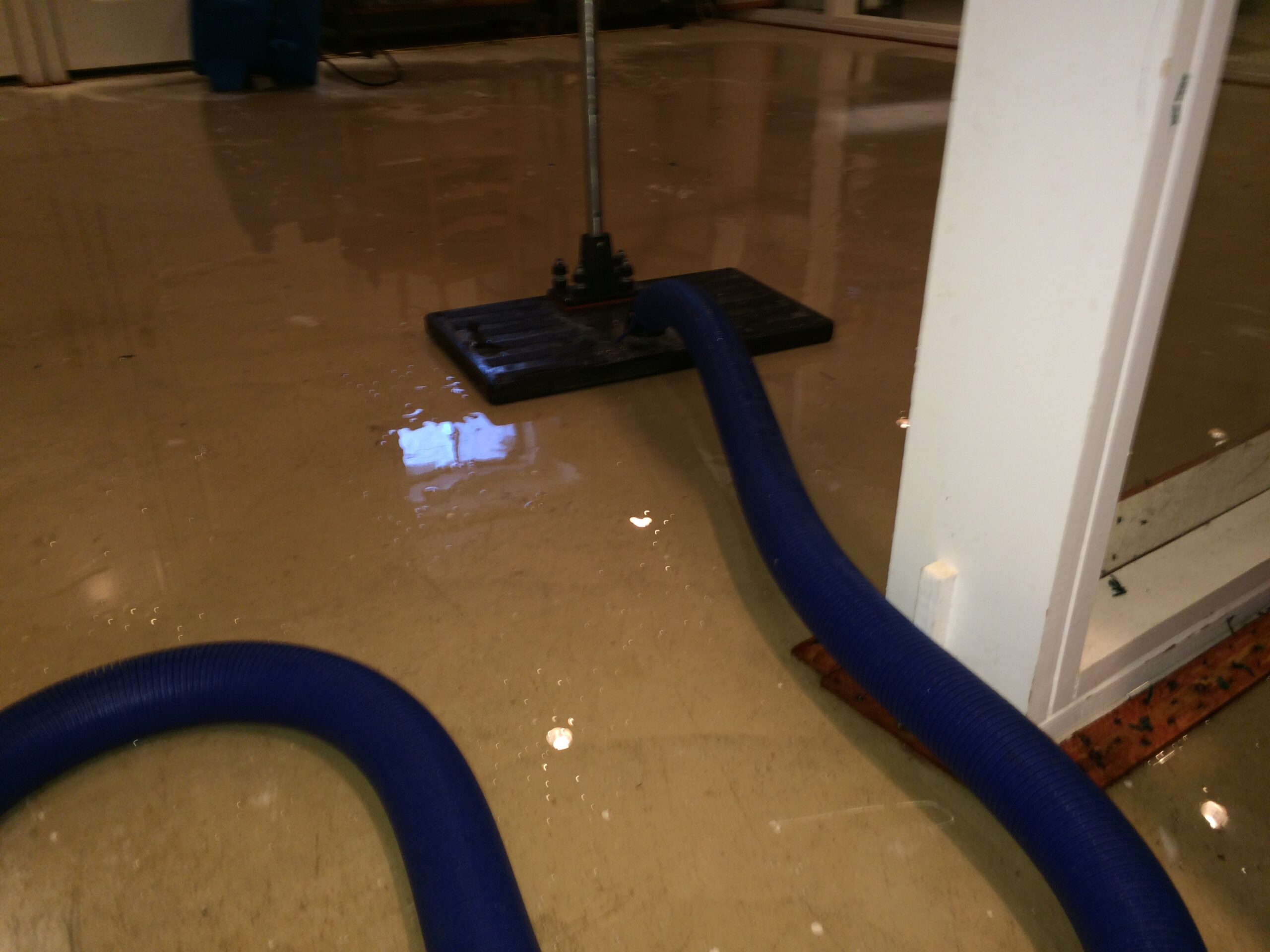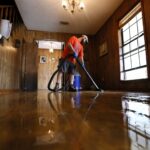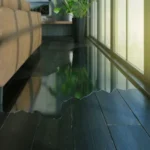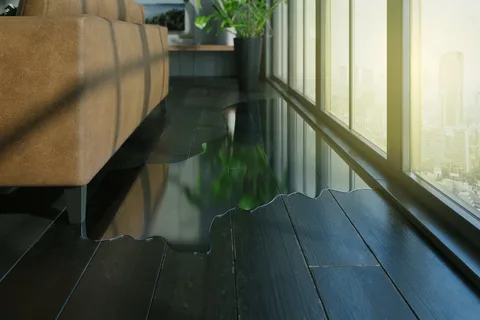
Water is destructive when inside homes and residential buildings and the following are some of the reasons why this is so. In a broad sense, water damage can be seen as a cross between structural transformation and uncontrolled growth, namely in the form of mold. This guide enables one to know the methods of water removal procedure to meet the maximum efficiency and avoid the formation of severe consequences. Dry Out Restorations offers quality water damage restoration services in Miami, FL, so the recovery process will start as soon as possible.
How Water Extraction Works in the Restoration Process
The initial intervention when it comes to water damage is water extraction which plays an essential role in the do’s and don’ts to be followed. It includes the reduction of water so that the building does not continue experiencing more damages and formation of molds. This is done through evaluation of the affected region then taking time to employ high-powered water pumps and vacuums to remove the water left behind. They use efficient and effective water extraction practices, and this helps in pulling out all the water thus reducing time taken in drying and the extent of damage.
Importance of Quick Water Removal
This helps reduce the extent of the damage that is caused by water in the house or car as planned earlier. Aqua can accumulate within the flooring, walls, and other furniture steadily which will eventually have a ruination impact. The faster the water is removed the minimal chances there are of mold formation taking place and weakening of the structures. Dry Out Restorations operates on an Emergency basis especially in water removal as this is a very sensitive issue that requires immediate attention.
Equipment Used for Water Extraction
There are water extracting tools that are used by Miami water damage restoration companies in the process. This includes submersible pumps, wet vacuums, and truck-mounted extraction units which are usually located in industrial complexes, warehouses among other areas that possess large room space. Dry Out Restorations has the best equipment to remove any water from the house and to prevent further damages, which may occur.
Steps Involved in the Water Extraction Process
- In their analysis, inspection and assessment professionals decide on further action to be taken in regard to the identified problem.
- Water Removal – Removal of water through the use of equipment that has the capacity to extract humidity from the affected area.
- Moisture Detection – Locating obscure moisture with better sensors.
- Dehumidification and Drying – Ensuring complete drying of affected areas.
- Sanitization and Cleaning – Preventing mold and bacterial growth.
- Final Inspection – A step that aims at ensuring that everything is back to working order and the property has no issues.
According to Dry Out Restorations, thorough extraction is the first step it takes in the water damage restoration process.
Ensuring Proper Moisture Control After Extraction
However, what you cannot see is that there is always water trapped in walls and floors Even after the water appears to be visible, it is still there. This results in mold formation as well as development of some structural complications such as dampness. Dry Out Restorations applies the most modern technique of moisture control to remove the last traces of water. Dehumidifiers and air movers are provided strategically to bring faster drying so that there will not be more harm to the property.
Dehumidification and Drying: Key Steps in Water Damage Repair
Humidity control is central to water damage restoration as it helps in reducing the formation of microbial growth on the affected structures. It entails creating a low humidity environment in the affected areas to avoid further formation of new molds and rotting out of the materials. To fight moisture and speed up the process of drying out the structure and contents, molds are done using commercial grade dehumidifiers and air movers.
Why Dehumidification is Crucial in Water Damage Restoration
This process also helps prevent secondary damages including molding, warping of woods and weakening of the building structures. High humidity level will slow down the restoration process and therefore dehumidifying is necessary. Dry Out Restorations makes sure that simultaneously to drying up, damage is not brewing in the background.
Types of Drying Equipment Used by Professionals
There are various instruments employed by water damage restoration technicians, which include,
- Air Movers – They are very useful in enhancing the flow of air hence increasing the rate of evaporation.
- Desiccant Dehumidifiers – Absorb excess moisture effectively.
- Low-Grain Refrigerant Dehumidifiers – Reduce humidity efficiently in large spaces.
- Moisture Sensors – Check the general drying process and wetness beneath it.
- Dry Out Restorations uses high technology to undertake a drying process in order to restore your property properly.
It is also outlined that regular moisture checks are necessary to guarantee through drying. Some of the moisture-meters and thermal images are as follows: Dry Out Restorations is capable of conducting moisture surveys in assessment on the affected areas.
Monitoring Moisture Levels During the Drying Process
Failure to dry them can cause mold formation, timber decay and instability of some structures. Proper drying methods allows Dry Out Restorations to place and use dehumidifiers and air movers properly in order to avoid additional damages and a proper restoration.
Preventing Secondary Damage with Proper Drying Techniques
After a water damage disaster, sanitation of the areas will be required to obliterate the germs, mold, as well as other smells that might be produced. He made certain that Dry Out Restorations utilizes appropriate products to clean infectious zones, this makes sure that the rooms will be capable of providing a healthy atmosphere for people.
How to Clean and Sanitize After Water Damage
In the next steps, disinfecting is carried out while ensuring that it is free from bad smells, stains, and mold formations. Dry Out Restorations utilizes a cleaning solution that is recommended for use to eliminate bacteria infested surfaces to provide healthy living standards.
Importance of Cleaning and Disinfecting Water-Damaged Areas
Water damage can also bring contaminants, bacteria and mold spores in the facilities. These hazards are issues of health and disinfection removes them to avoid such issues. Dry Out Restorations offers cleaning services to meet the indoor air quality and sanitize to help in maintaining healthcare environments.
Safe Cleaning Solutions and Disinfection Methods
Sanitizers and anti-infective agents authorized by the Environmental Protection Agency can sanitize surfaces properly. Clean-tech company Dry Out Restorations focuses on safety and efficiency of the cleaning services provided to prevent adverse effects on one’s health and property.
Removing Odors and Preventing Mold Growth
Fumes from water damage may persist and are undesirable, and tend to point towards mold formation. Dry Out Restorations applies contemporary methods of removing the smell and preventing mold development such as oxygen treatment and air sterilization with HEPA.
Proper Disposal of Contaminated Materials
Some of the contents that you may have to remove include saturated drywall and carpeting which are normally disposed of. Dry Out Restorations makes it a policy to dispose of any item that has been affected appropriately to avoid subjecting people to certain diseases and to ensure that there is no decomposition.
What to Expect During a Water Damage Restoration Inspection
Thus, a professional inspection helps define the extent of water damages and all the steps that may be required to remedy the situation. Dry Out Restorations carries out its assessment effectively employing the use of efficient tools and experience to come up with the right approach for restoration.
Initial Assessment: Identifying the Source and Extent of Damage
The first thing involved in an inspection process is pulling water and determination of the areas that were affected. Through the evaluation, Dry Out Restorations is able to accurately measure and identify so as to facilitate successful restoration.
Tools and Techniques Used in Water Damage Inspection
Each of these tools embraces a moisture meter, thermal scanner and hygrometer. It is used to find out volumes of concealed water and humidity to be expected in a particular area. Dry Out Restorations is equipped with the best tools which through inspection the experts are able to do a proper planning.
Evaluating Structural and Secondary Damage
Defects such as leaking, cracks on the walls and floors pose a serious problem that needs to be addressed. Overall, Dry Out Restorations evaluates the damages that are structural and the other associated ones in order to create a repair schedule.
Creating a Restoration Plan Based on Inspection Findings
The stabilization plan includes treatment measures and drying schedule proposing restoration works in specified areas. Dry Out Restorations offers all round property restoration solutions to minimize downtime in the process.
How Professionals Detect and Repair Structural Water Damage
Moisture meters as well as infrared cameras are employed by professionals in the identification of concealed water damage. Such repairs are more functional in nature and may include the repairing of walls through repairing or replacement of the drywalls, floors, and parts of the insulation material. Dry Out Restorations is focused on structural water damage fixing to Duro, ensuring that houses or any other property is strong enough to withstand various forces.
Preventing Future Structural Issues After Water Damage
Disposing of water through drains may come in handy in eradicating repeatedly disruptive foreseen leaks with rigorous waterproofing measures. Dry Out Restorations provides professional recommendations and services to prevent such a situation in the future.
Should you require any water damage restoration near Miami, FL, call the number of Dry Out Restorations and they will be glad to assist you with the process, right from when you contact them to when the services are fully completed and your property is back to its normal state.




